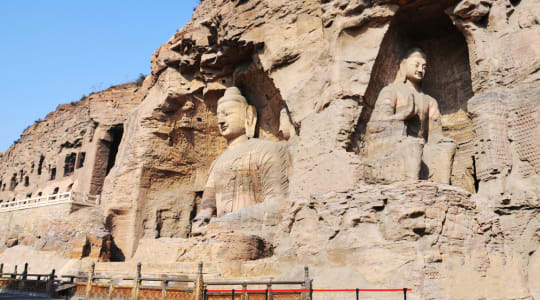
Yungang Grottoes is a UNESCO World Heritage Site located in the city of Datong, Shanxi Province, China. It is one of the most famous and largest Buddhist grotto complexes in China, featuring 53 grottoes and 51,000 statues. The grottoes were built during the Northern Wei Dynasty (386-534 AD) and the first grotto was constructed in 460 AD.
The Yungang Grottoes are renowned for their magnificent Buddhist art, with sculptures and frescoes that reflect the rich and diverse artistic traditions of Chinese Buddhist art. The sculptures are made from limestone and vary in size from small figures to large, complex, multi-story carvings. The grottoes are also noted for their architectural and engineering achievements, including their precise layout and the use of water channels for drainage and preservation.
The most famous grotto at Yungang is the Giant Buddha, which is a 17-meter-high statue of Buddha located in Cave 20. Other notable grottoes include Cave 5, which features a large relief of a seated Buddha, and Cave 16, which has a life-sized statue of Guanyin, the Bodhisattva of compassion.
Yungang Grottoes are considered an important cultural and historical site in China and attract a large number of tourists each year. They were designated a UNESCO World Heritage Site in 2001, and efforts are being made to preserve and protect the site from further deterioration.
Explore Near Yungang Grottoes
Discover 1 attraction and 2 cities within 75km. Perfect for planning day trips, finding connecting flights, or discovering new destinations to explore during your visit.
Nearby Attractions & Places to Visit
1 destination within 69.9km from your location

Nearby Cities Worth Exploring
2 destinations within 14.2km - 36.7km from your location
Cross-Border Adventures Near Yungang Grottoes
Discover cross-border adventures near Yungang Grottoes. Explore neighboring countries with similar attractions and extend your travel experience across borders.








And 8 more neighboring countries